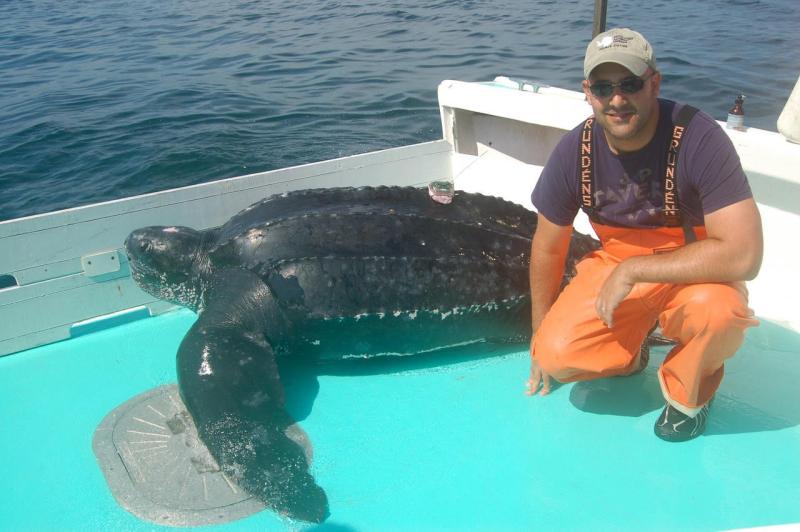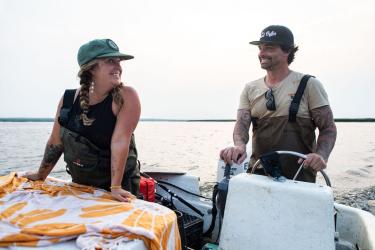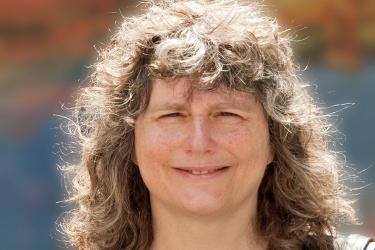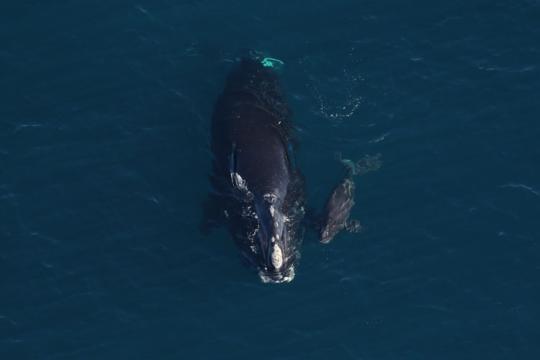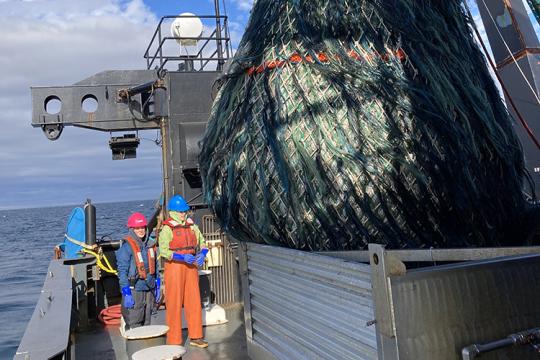We continue our series to introduce the people who work at the Northeast Fisheries Science Center. Each month we feature a new "face" from the Center's five laboratories. We share with you a bit about who they are, what they do at the Center, and what they enjoy doing in their spare time. Vincent Saba from our Ecosystems Dynamics and Assessment Branch applies high-resolution climate models to research questions.
Where did you grow up?
I grew up in northeast Philadelphia. When I was kid, I would go fishing for summer flounder (or fluke) and blue crabs in the Delaware Bay with my dad and grandfather. I always had an interest in science and I initially wanted to become an astronomer or aerospace engineer. When I was a senior in high school, I took a marine biology class and it sparked my interest in ocean science.
Where did you go to school and what did you get your degree(s) in?
I received my undergraduate education in environmental science at Drexel University in Philadelphia. In my junior year, I started working for a professor who studied an endangered population of leatherback sea turtles that nested in northwestern Costa Rica. I was interested in wildlife biology and wanted to stay at Drexel for my M.S. degree in environmental science. This led to research on freshwater turtles at the John Heinz Wildlife Refuge near the Philadelphia International Airport. During that time, I also spent about 10 months conducting research at Parque Nacional Marino Las Baulas. That’s a national park in Costa Rica where eastern Pacific leatherback turtles nest from October to February. In 2000, we observed more than 400 nesting females in a single season. Today, only about 10 to 20 leatherbacks nest there each year.
In 2007, I received a Ph.D. in marine science within the fisheries science department of the Virginia Institute of Marine Science. My advisor was Dr. John Musick and my dissertation focused on the impacts of climate variability on leatherback sea turtles. I also worked with the VIMS shark longline tagging program, striped bass survey, and the sea turtle stranding network. I remained at VIMS until 2009 for my first postdoctoral position, working with Dr. Marjorie Friedrichs on a marine primary productivity model assessment.
How did you come to work at the Northeast Fisheries Science Center?
Completing a Ph.D. and starting my postdoctoral work during the 2007- 09 economic recession was definitely a stressful time for recent graduates looking for employment. I decided to diversify myself as a scientist and pursued postdoctoral positions that involved multidisciplinary research.
My wife, Grace, and I met in grad school. There were times when we were stressed about us both having the opportunities to start our careers in marine science at the same time and location. In 2010, I completed my first postdoctoral position at VIMS. I then accepted a research scholar position at Princeton University and the NOAA Geophysical Fluid Dynamics Laboratory. Grace had finished her Ph.D. from VIMS and was offered a postdoctoral position at Rutgers University, which is not far from Princeton. Our original positions in New Jersey were temporary.
In 2011, I accepted a permanent position within the Northeast Fisheries Science Center. I would be conducting climate, ecosystem, and fisheries research while still residing at NOAA’s Geophysical Fluid Dynamics Laboratory at Princeton University. I am the only NOAA Fisheries employee at the lab. This collaboration has facilitated application of the laboratory’s climate models to our research at the center. Grace also found a permanent position at Rutgers after her postdoc and is now an assistant professor in the marine and coastal sciences department. Some of her research involves collaboration with center scientists.
What do you like most about your position?
Working for the center's Ecosystems Dynamics and Assessment Branch allows me to work with a multidisciplinary group of scientists. They assess all components of the marine ecosystem, from physics to primary producers to keystone predators. I also really enjoy working at a world-recognized climate modeling lab. I can work with leading experts to apply state-of-the-art global climate models to regional ecosystem, fisheries, and protected species research here in the Northeast.
Having gone from fieldwork to modelling, I do miss being in the field sometimes. I am still involved with sea turtle research. I’ve written a few book chapters on sea turtles, and continue to work with colleagues with and outside the center on various research projects.
What are some of your hobbies?
One of my passions is volunteering for my town’s youth baseball program. I have two young boys (11 and 4 years old) who both play baseball and I really enjoy coaching their teams. I also love going to Phillies games and to the Jersey shore with my family. I am an avid video gamer and play online with some of my colleagues from NOAA GFDL every Wednesday night. I also love to go swimming at my local gym. I feel it is the most therapeutic exercise one can do. Most of my hobbies are on hold right now due to the current social distancing restrictions, but I have enjoyed working on various landscaping projects at home. I am looking forward to when baseball can start up again!
For more information, please contact Shelley Dawicki.
